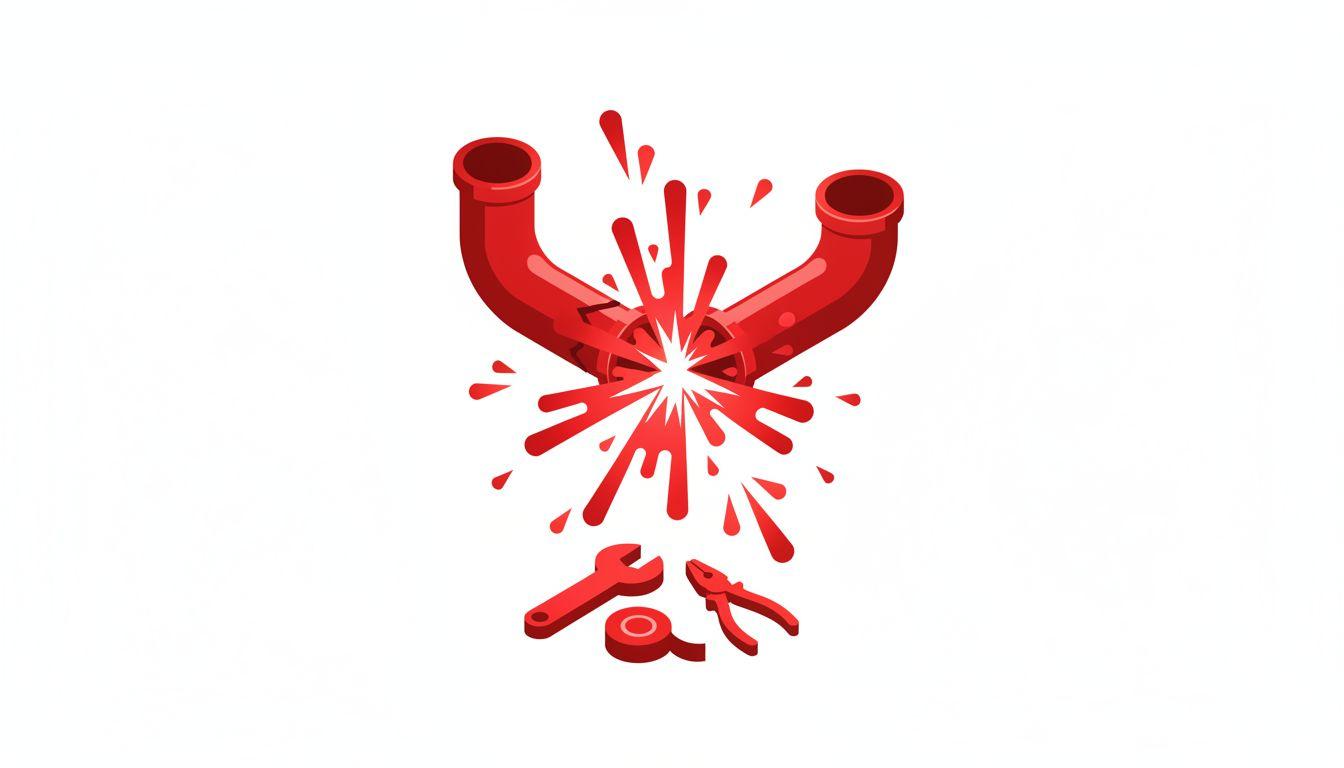The call comes in at 2:47 AM. A panicked homeowner reports water "pouring through the ceiling" in their living room. Your dispatcher has 30 seconds to make a critical decision: Is this a true emergency requiring immediate dispatch, or can it wait until morning?
Get it wrong, and you either waste expensive emergency resources on a minor issue or lose a customer to a competitor who responds faster to a genuine crisis.
For plumbing businesses, effective call triage separates profitable operations from chaotic ones. According to industry data, emergency plumbing calls command premium prices averaging $450-600 per call - significantly higher than routine service calls. But plumbing companies that don't properly triage calls face problems on both ends: dispatching emergency crews for non-urgent issues burns resources, while delaying response to genuine emergencies damages reputation and loses customers.
The stakes are high. Research shows that businesses miss about 27-28% of inbound calls, with 85% of those missed callers moving on without leaving a voicemail. For emergency plumbing situations, that caller is already moving down their list to the next plumber who will answer.
The Cost of Poor Call Triage
Before diving into the triage decision tree, let's establish why this matters financially.
Poor triage creates losses in both directions. Send an emergency crew to a slow drip that's been happening for three days? You've just burned $200-400 in premium labor costs that could have been handled during regular hours at half the price. Tell a customer with active flooding to wait until morning? They'll call your competitor, and you've lost a $1,500-3,000 emergency repair job.
The numbers tell the story. Missing after-hours emergency calls can result in $50,000-$250,000 per year in missed revenue, depending on call volume and local pricing. For plumbing businesses receiving just 3-4 emergency calls per day, proper triage and response systems can capture an additional $180,000-360,000 in annual revenue.
Industry research reveals that about 30% of answered calls convert to paid jobs. For emergency situations where the customer needs help immediately, that conversion rate jumps significantly higher - often to 60-70% - because the urgency eliminates price shopping. Speed and availability outweigh price considerations when water is actively damaging property.
The Emergency vs. Routine Decision Tree
Professional plumbing dispatch teams follow a systematic triage process using targeted diagnostic questions. The entire assessment typically takes less than five minutes but determines whether a truck rolls immediately or an appointment gets scheduled for the next business day.
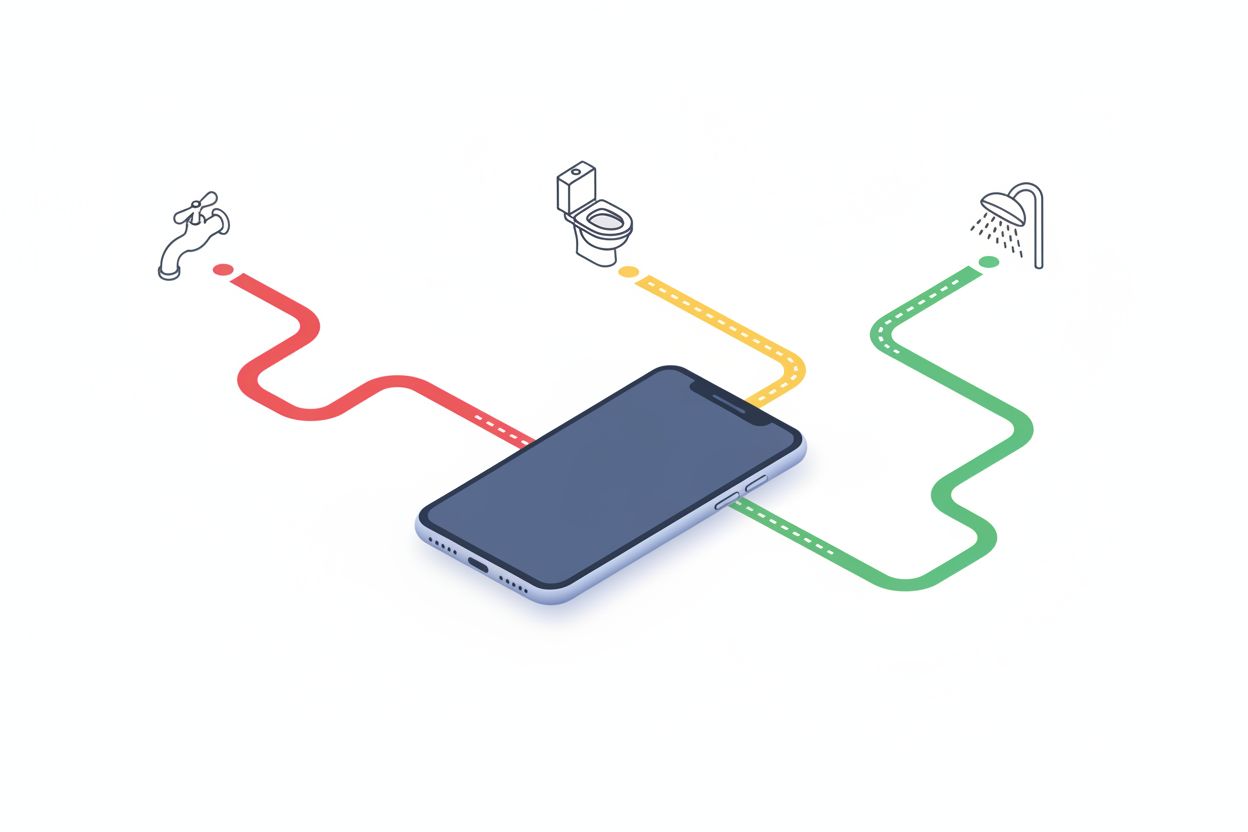
Red Flags: Immediate Emergency Dispatch Required
Certain scenarios demand immediate response regardless of time of day. These red flag situations involve active damage, safety hazards, or complete loss of essential services.
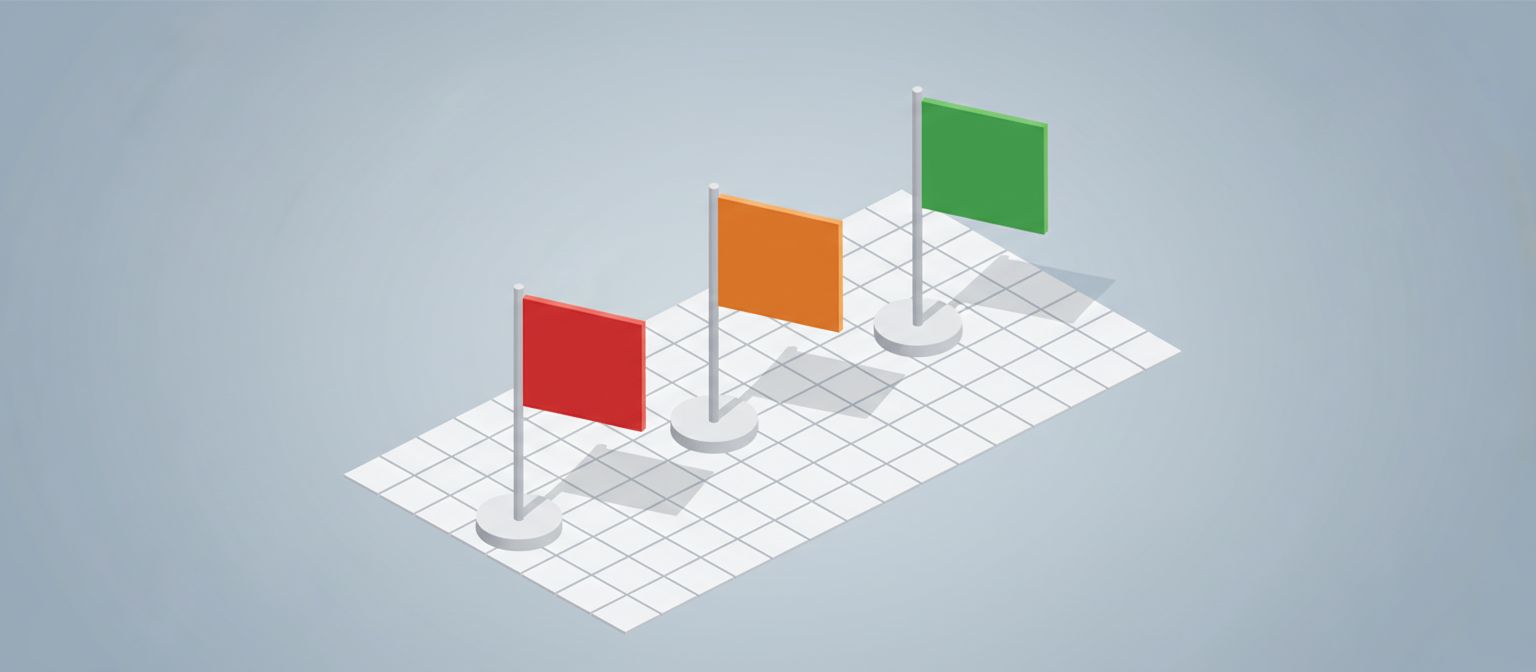
Active Flooding or Water Flow
When water is actively flowing where it shouldn't, the clock is ticking on property damage. A burst pipe releasing hundreds of gallons per hour can cause $10,000-50,000 in water damage within hours. The key question: "Is water actively flowing right now?"
If yes, this triggers immediate emergency dispatch. The dispatcher should instruct the customer to shut off water at the main valve while the crew is en route. Even a 30-minute delay in response can mean the difference between a $2,000 pipe repair and a $15,000 water damage restoration project.
Burst pipes represent the quintessential plumbing emergency. When water freezes inside pipes during winter, it expands by approximately 9%, generating pressures exceeding 2,000 PSI. When the pipe ruptures, water escapes under pressure, flooding basements, damaging walls, and soaking insulation. Winter months see the highest concentration of burst pipe emergencies, with water damage and freezing accounting for approximately 24-28% of all homeowner insurance claims.
Complete Loss of Water Supply
No water to an entire building qualifies as an emergency, especially for commercial properties, multi-family buildings, or any residence with vulnerable occupants. The diagnostic question: "Do you have any water at all in the building?"
Complete loss typically indicates a main line break, frozen supply line, or critical valve failure. These situations require immediate investigation and repair, as they affect basic sanitation, safety, and habitability.
Sewage Backup
Raw sewage backing up into a residence or commercial space represents both a health hazard and an emergency requiring immediate response. The question: "Is sewage or contaminated water backing up into your living spaces?"
Sewage contains bacteria, viruses, and pathogens that create serious health risks. Every hour that sewage remains in contact with surfaces increases contamination and cleanup costs. These calls receive immediate emergency priority, often with specialized equipment and protective gear.
Gas Leak or Gas Smell Near Plumbing
Any report of gas smell near water heaters, gas lines, or plumbing fixtures requires immediate emergency response. The question: "Do you smell gas or suspect a gas leak?"
Gas leaks present life-safety hazards requiring immediate evacuation and response. Dispatchers should instruct customers to evacuate immediately, avoid using electrical switches or creating sparks, and call the gas utility while the plumbing crew responds.
Electrical System at Risk
Water near electrical panels, outlets, or systems creates shock and fire hazards. The question: "Is water coming into contact with electrical systems, outlets, or your electrical panel?"
Water and electricity together create immediate danger. These situations require emergency response with the instruction to shut off power to affected circuits if it can be done safely.
Yellow Flags: Urgent But Can Often Wait for Business Hours
Many situations feel urgent to customers but don't require premium emergency dispatch. These yellow flag scenarios can typically be scheduled within 24-48 hours without significantly worsening the problem.
Slow Leaks and Drips
A drip under the sink that's been happening for three days doesn't suddenly become an emergency at 11 PM. The question: "When did you first notice this problem, and has it gotten worse recently?"
If the issue has persisted for days without causing visible damage, and the customer can shut off the valve to stop the drip temporarily, this schedules for regular business hours. The same leak that would cost $600 in emergency rates might cost $250 during standard hours - a better value for the customer.
Single Clogged Drains
One clogged sink or toilet, while inconvenient, rarely constitutes a true emergency unless it's the only toilet in the residence or sewage is backing up. The question: "Is this the only toilet/sink in your home, and is waste backing up into living areas?"
For residential properties with multiple bathrooms, a clogged toilet can wait for regular business hours. Commercial properties with only one bathroom may warrant faster response, but still not necessarily middle-of-the-night emergency pricing.
Water Heater Issues Without Active Leaking
A water heater that's not producing hot water but isn't actively leaking can usually wait for business hours. The question: "Is water actively leaking from your water heater, or is it just not heating properly?"
No hot water is certainly inconvenient, but it's not an emergency unless vulnerable populations (elderly, infants) are affected or if active leaking is occurring. Many "no hot water" calls simply require pilot light relighting or thermostat adjustment - services that don't justify emergency rates.
Water heaters work harder in winter as incoming water temperatures drop from about 50°F in summer to 40°F in winter, requiring greater temperature rise and energy consumption. Failure rates peak during winter months, but non-leaking failures can usually be scheduled for next-day service.
Running Toilets
A toilet that won't stop running wastes water but doesn't typically require emergency response. The question: "Can you shut off the water valve to the toilet to stop the running temporarily?"
Most running toilets result from simple flapper valve failures costing $15-30 in parts. While annoying and wasteful, they can wait for regular business hours when parts are readily available and labor costs are standard.
Green Flags: Routine Maintenance and Non-Emergency Scheduling
Some calls clearly fall into routine maintenance categories requiring no urgency whatsoever.
Preventive Maintenance Requests
Customers calling to schedule drain cleaning, water heater flushing, or other preventive services obviously don't need emergency response. These schedule during regular business hours at customer convenience.
Fixture Installations and Upgrades
Installing new faucets, replacing shower heads, or upgrading fixtures are projects that schedule during standard business hours. These calls typically convert to higher-ticket jobs but don't require emergency protocols.
Estimates and Consultations
Customers calling for quotes on repiping, water heater replacement, or other major projects schedule during business hours when the estimator can thoroughly assess the situation and provide accurate pricing.
How AI Handles Diagnostic Triage
Modern plumbing businesses increasingly rely on AI answering services to handle initial call triage, especially during after-hours periods when human dispatchers aren't available. AI systems excel at asking the standardized diagnostic questions that determine emergency status.
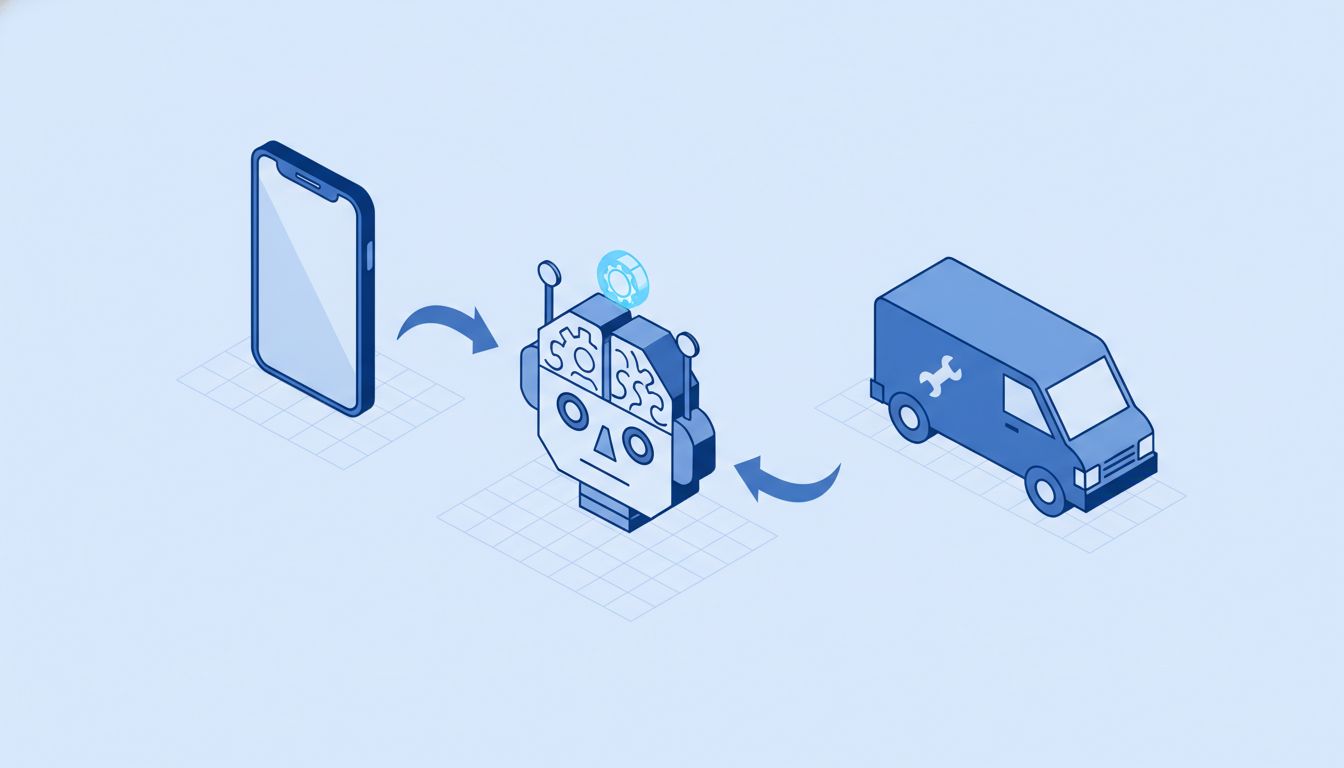
Here's how AI triage works in practice:
Systematic Question Flow
The AI follows a pre-programmed decision tree, asking targeted questions in sequence:
- "What plumbing issue are you experiencing right now?"
- "Is water actively flowing or leaking at this moment?"
- "When did you first notice this problem?"
- "Can you access the water shutoff valve for this fixture or the main shutoff?"
- "Is there any damage to property or risk to electrical systems?"
- "Are you experiencing complete loss of water or sewage backup?"
Based on the answers, the AI categorizes the call as immediate emergency, urgent (next 24 hours), or routine scheduling.
Immediate Customer Instructions
For genuine emergencies, the AI provides immediate safety instructions while dispatching the on-call technician:
- "Shut off the water at the main valve to stop the flow immediately"
- "Move valuables and furniture away from the water"
- "If water is near electrical outlets, shut off power to that circuit"
- "Place towels or buckets to contain water spread"
These instructions prevent additional damage during the response time, potentially saving thousands in water damage restoration costs.
Automated Dispatch and Notification
When the AI identifies a true emergency, it immediately:
- Sends SMS and phone notification to the on-call plumber with customer details
- Creates a service ticket in the dispatch system with emergency priority
- Provides the customer with estimated arrival time
- Sends a text confirmation with technician name and truck number
For routine calls, the AI:
- Offers available appointment slots during business hours
- Books the appointment directly into the calendar
- Sends confirmation email and SMS
- Adds notes about the reported issue to the service ticket
Continuous Learning
Advanced AI systems analyze call outcomes to improve triage accuracy. If a call categorized as "urgent" turned out to be a true emergency requiring faster response, the system adjusts its decision parameters for similar future scenarios.
According to Gartner research on customer service AI, 85% of customer service leaders will explore or pilot conversational AI in 2025, recognizing that immediate response - even from AI - creates better customer satisfaction than delayed human response.
Case Study: Handling March Freeze Event
A Bay Area plumbing company experienced firsthand how proper triage systems prevent chaos during emergency surges. When an unexpected freeze hit the region in March, temperatures plummeted to 22°F overnight, causing widespread pipe bursts across the service area.
The Challenge
Within 6 hours, the company received 83 emergency calls - more than their typical weekly emergency volume. With only 4 technicians on call, they faced an impossible situation: every caller needed help urgently, but the team could only physically respond to 12-15 calls during the overnight period.
The Triage System
The company's AI answering service automatically triaged all 83 calls using the diagnostic decision tree:
- 41 calls identified as immediate emergency: Active flooding, no water shutoff access, water near electrical systems
- 28 calls categorized as urgent: Confirmed pipe damage but customer able to shut off water
- 14 calls classified as routine: Frozen pipes with no damage, preventive winterization requests
The Response
The AI automatically:
- Dispatched technicians to the 41 immediate emergencies in order of severity (flooding volume, electrical risk, vulnerable occupants)
- Scheduled the 28 urgent calls for first-thing morning appointments (6 AM start)
- Booked the 14 routine calls throughout the next week during regular hours
- Sent every customer specific instructions for minimizing damage until the technician arrived
The Results
By morning, the company had:
- Completed 15 emergency repairs during overnight hours
- Started morning shifts at 6 AM to address urgent calls
- Generated $67,400 in emergency revenue in 24 hours
- Maintained 94% customer satisfaction despite the volume surge
- Avoided burning out technicians with unnecessary emergency dispatches for routine issues
Without the triage system, dispatchers would have simply sent technicians to whoever called first, potentially missing the most severe emergencies while responding to minor frozen pipes that could have waited safely.
Training Your Team on Triage Protocols
Whether using human dispatchers or AI systems, establishing clear triage protocols requires training and documentation.
Create Written Decision Trees
Document your specific criteria for emergency, urgent, and routine classification. Include example scenarios for each category so dispatchers (or AI configuration) can categorize consistently.
Role-Play Common Scenarios
Train dispatchers by role-playing typical and edge-case scenarios:
- Homeowner reporting "major leak" that turns out to be a dripping faucet
- Commercial property manager downplaying sewage backup as "minor issue"
- Elderly customer unable to locate water shutoff during active flooding
Establish Authority Levels
Give dispatchers clear authority to make triage decisions without manager approval. Requiring supervisor signoff on emergency dispatches creates delays that defeat the purpose of triage systems.
Review Triage Accuracy
Analyze completed calls to assess whether triage decisions were correct. If calls categorized as "routine" turned out to be emergencies requiring immediate response, adjust your decision criteria.
Seasonal Triage Considerations
Call triage criteria may shift slightly based on seasonal patterns and regional weather events.
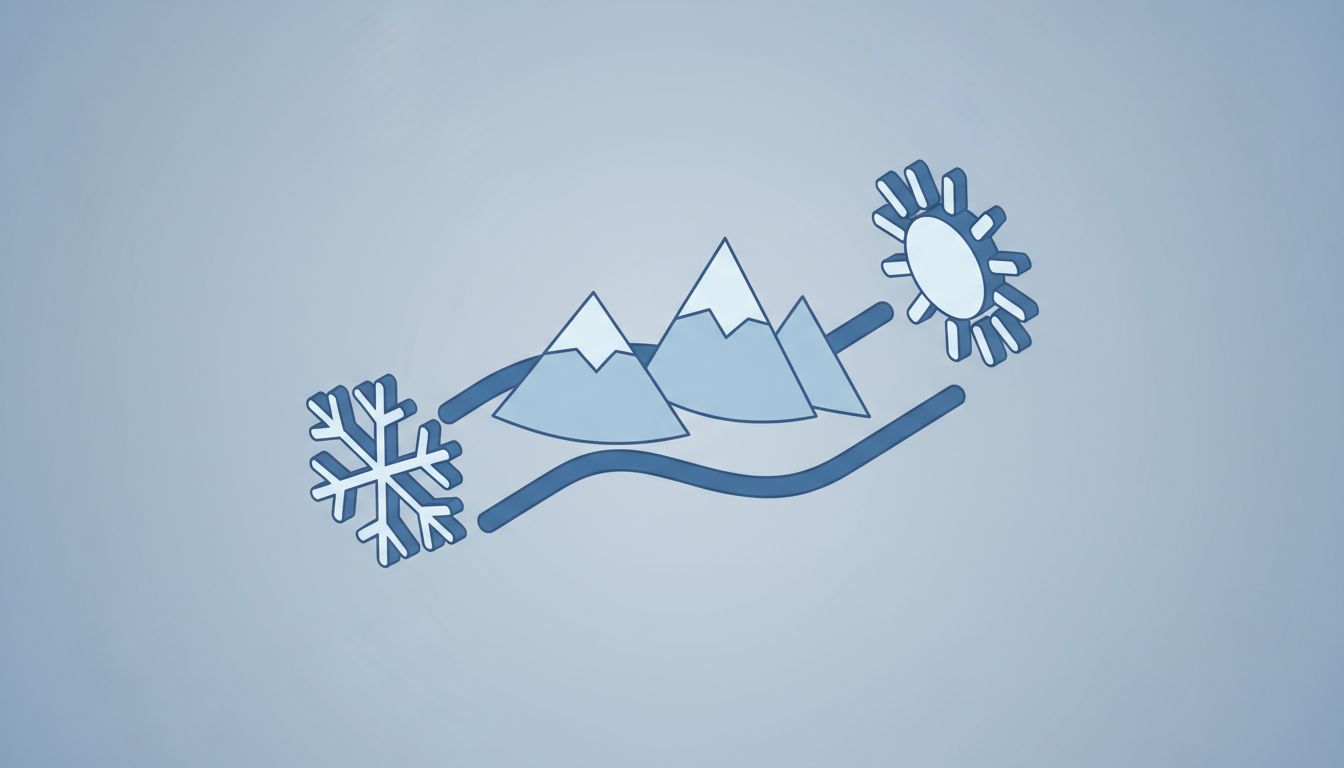
Winter Freeze Season
During winter months, especially when freeze warnings are issued, the threshold for emergency dispatch may lower slightly. A frozen pipe with no current damage still receives faster response during active freeze events because the risk of burst increases substantially.
Winter generates the highest concentration of plumbing emergencies, with water damage and freezing accounting for approximately 24-28% of all homeowner insurance claims. Many plumbing companies increase on-call staffing during predicted freeze events, making emergency capacity more available.
Spring Thaw
When temperatures rise after prolonged freezing, underground pipe failures often emerge as ground shifts and frozen sections thaw. Triage systems should account for the delayed-discovery nature of these failures - a customer discovering flooding that occurred overnight may report it as "just noticed" even though response urgency is high.
Summer Peak Demand
During summer months when call volume from routine maintenance and installations peaks, emergency triage helps protect capacity for genuine emergencies. The temptation to treat every call as emergency during slow periods evaporates when the schedule is full.
The Revenue Impact of Effective Triage
Proper call triage directly impacts profitability through multiple mechanisms:
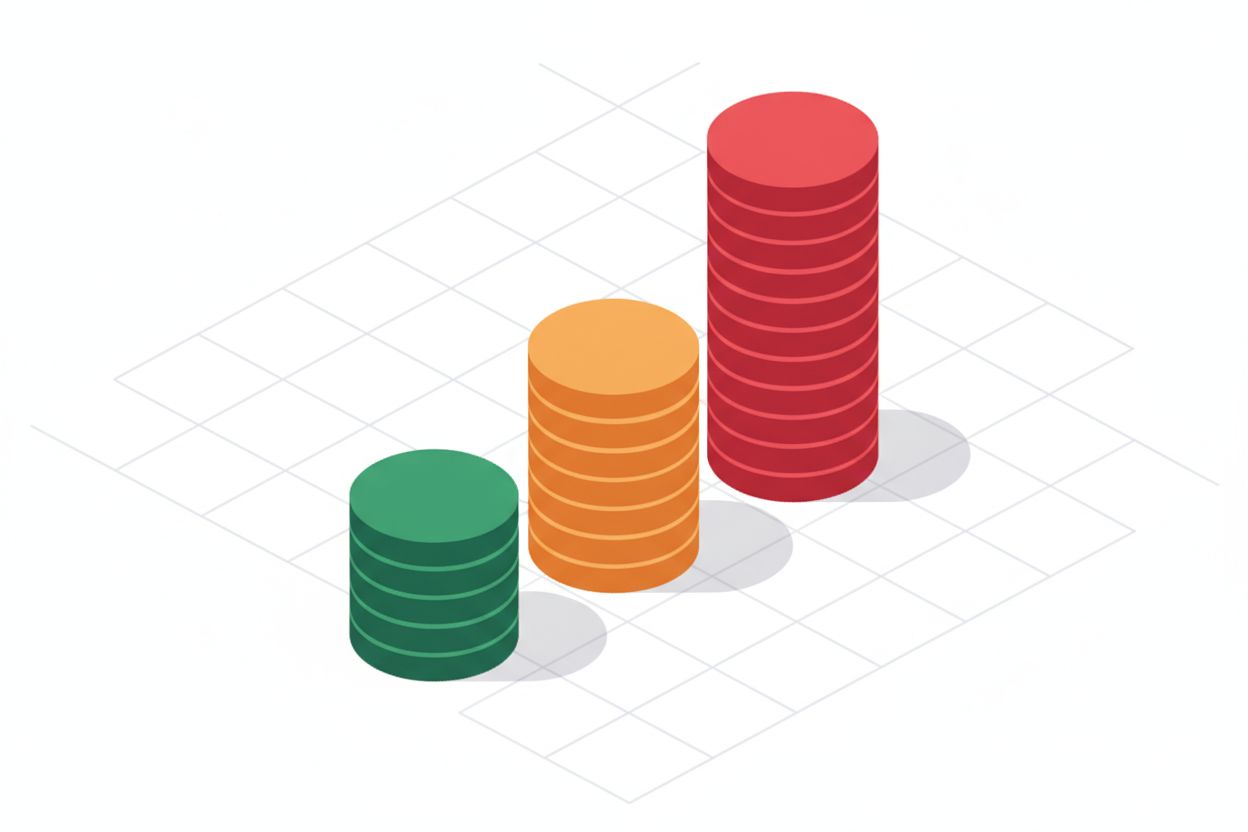
Captures High-Value Emergency Revenue
By immediately identifying and responding to genuine emergencies, plumbing companies capture the highest-value calls that command premium pricing. Emergency plumbing services typically charge $150-500 per hour compared to $100-200 for standard service.
Reduces Wasted Emergency Resources
Dispatching emergency crews only for true emergencies preserves capacity for the calls that actually need it. A truck sent to a dripping faucet at 3 AM might miss the call about active flooding that comes in 20 minutes later.
Improves Customer Satisfaction
Customers appreciate honest assessment. Telling someone their issue can wait until morning and saving them $400 in unnecessary emergency fees builds loyalty and generates referrals. Research shows 73% of customers switch providers after just two negative experiences, making every interaction critical.
Optimizes Technician Scheduling
Proper triage fills the regular-hours schedule with routine work while preserving emergency capacity for urgent situations. This creates more predictable workflows and reduces technician stress from constant emergency mode.
Common Triage Mistakes to Avoid
Even experienced dispatchers fall into these common triage errors:
Taking Customer's Word for "Emergency"
Customers frequently describe non-emergencies as urgent simply because it's inconvenient to them. A dispatcher must ask diagnostic questions rather than accepting the customer's categorization at face value.
Overreacting to Dramatic Descriptions
"Water everywhere!" might mean 2 gallons from an overflowing toilet or genuine flooding. Ask specific questions about volume, duration, and spread rather than reacting to emotional tone.
Underestimating Timeline Issues
A "small leak" that's been happening for a week suggests the customer has already demonstrated it can wait - but a similar leak discovered 20 minutes ago might be worsening rapidly. Timeline matters.
Failing to Provide Interim Instructions
Even if the crew can't arrive for 2 hours, the dispatcher should provide immediate mitigation instructions: shut off water, contain spread, move valuables. These instructions prevent damage escalation.
Ignoring Vulnerable Populations
A home without hot water might be routine for most customers but could be dangerous for households with infants, elderly residents, or individuals with medical conditions requiring specific temperature control.
Beyond Triage: Follow-Through Systems
Effective triage is only step one. What happens after the call determines whether the system succeeds.
Automated Follow-Up
After booking routine appointments, automated systems should send:
- Immediate confirmation via email and SMS
- Appointment reminder 24 hours before
- Technician en-route notification with photo and ETA
- Post-service satisfaction survey
These touchpoints prevent no-shows and improve customer experience without requiring staff time.
Emergency Call Documentation
Every emergency call should generate detailed documentation:
- Initial symptoms and timeline reported by customer
- Triage decision rationale
- Instructions provided to customer
- Response time from call to technician arrival
- Actual severity discovered on-site
This documentation helps train AI systems, improve human dispatcher decisions, and protects the company if disputes arise about response time or damage scope.
CRM Integration
Triage information should flow directly into the CRM system, creating customer history that informs future interactions. A customer who previously called about a burst pipe might need different questions during a second call about water issues, as it could indicate ongoing problems requiring comprehensive inspection.
The Future of Plumbing Call Triage
Call triage systems continue evolving with technology advancements:
Predictive Analytics
Future systems will analyze weather patterns, building age, pipe materials, and service history to predict emergency likelihood. When a freeze warning is issued, the system might proactively contact customers with vulnerable pipe configurations to recommend preventive measures.
Visual Assessment Integration
Emerging AI systems can analyze photos or video sent by customers during the call, assessing damage severity more accurately than voice description alone. A customer could send a photo of their flooded basement while speaking with AI, allowing more precise triage decisions.
Integration with Smart Home Systems
As smart water sensors and leak detectors become more common, triage systems will receive data directly from IoT devices. The call might originate from the customer's leak detector rather than the customer themselves, providing more objective damage assessment.
Multi-Channel Triage
Future triage won't be phone-only. Text message, chat, and even social media inquiries will flow through the same diagnostic decision tree, ensuring consistent categorization regardless of how the customer initiates contact.
Taking Action: Implementing Triage in Your Business
For plumbing companies ready to implement or improve call triage systems:
Start with Documentation
Write down your current informal triage criteria. What makes you dispatch immediately versus schedule for tomorrow? Document these rules to create consistency.
Test with Your Team
Role-play scenarios with dispatchers and technicians. Present the scenario, have them categorize it, then discuss whether they got it right based on your criteria.
Consider AI Support
Even small plumbing companies can benefit from AI answering services that handle after-hours triage. Vocaly AI's plumbing solution starts at $99/month and can handle unlimited calls simultaneously - something human dispatchers can never achieve during emergency surges.
Measure and Refine
Track your triage accuracy by comparing initial categorization to actual job outcomes. If you're frequently dispatching emergency crews for routine issues or scheduling emergencies that should have been immediate, adjust your criteria.
Calculate Your ROI
Use the after-hours revenue calculator to determine how much revenue you're losing to missed calls and poor triage decisions. For most plumbing companies receiving 3+ emergency calls daily, proper triage and 24/7 answering can capture $180,000-360,000 in additional annual revenue.
Conclusion: Triage Separates Thriving Plumbing Businesses from Struggling Ones
When water is actively flooding a basement at 2 AM, every second counts. The plumbing company that answers immediately, asks the right diagnostic questions, and dispatches a fully-equipped truck within 45 minutes wins both the job and a loyal customer.
The company that sends every after-hours call to voicemail, or dispatches emergency crews for minor drips while missing genuine emergencies, gradually loses market share to better-organized competitors.
Effective call triage isn't complicated - it's systematic. By implementing a clear decision tree, training staff (or configuring AI), and documenting your criteria, you transform chaotic emergency response into a profitable, predictable system that serves customers better while protecting your resources.
The data is clear: plumbing businesses miss about 27-28% of calls, and 85% of those missed callers never call back. For emergency situations worth $450-600 per call, that's $50,000-250,000 in annual lost revenue.
The question isn't whether you can afford to implement proper triage systems. The question is whether you can afford not to.
Frequently Asked Questions
How long should emergency plumbing response time be?
Industry standards target emergency plumbing response within 1 hour of the initial call, with exceptional services aiming for 45 minutes or less. For life-safety situations (gas leaks, sewage backup), response should be immediate - typically within 30 minutes.
What's the difference between urgent and emergency plumbing calls?
Emergency calls involve active damage, safety hazards, or complete loss of essential services requiring immediate response. Urgent calls have confirmed problems but the customer can mitigate temporarily (like shutting off a valve), allowing response within 24 hours during business hours.
Can AI really handle emergency plumbing call triage accurately?
Yes. Modern AI answering systems follow the same diagnostic decision tree that trained human dispatchers use, asking systematic questions to determine severity. Research shows AI triage accuracy matches or exceeds human dispatcher performance, with the advantage that AI never misses calls due to high volume.
What should customers do while waiting for emergency plumber arrival?
Shut off water at the main valve or fixture valve to stop active flow. Move valuables and furniture away from water. Place towels or buckets to contain spreading. If water is near electrical outlets or panels, shut off power to affected circuits. Take photos of damage for insurance documentation.
How much does after-hours emergency plumbing cost compared to regular service?
Emergency plumbing services typically charge 1.5x to 2x regular rates, with hourly rates ranging from $150-500 compared to $100-200 for standard service. The premium reflects immediate availability, after-hours labor costs, and the equipment investment required to respond to any emergency.
Should I use an answering service or AI for plumbing call triage?
AI answering services offer significant advantages for plumbing businesses: 24/7 availability without human limitations, ability to handle unlimited simultaneous calls, consistent triage quality, automatic dispatch and CRM integration, and cost of $99-499/month versus $500-1,000+ for traditional answering services. For most plumbing companies, AI provides better value and performance.

